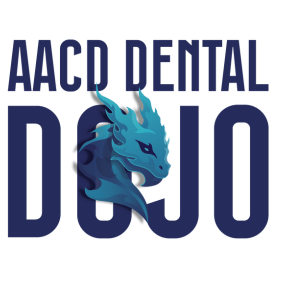By Salvatore Lotardo, DDS, AAACD, AACD Accreditation Chairman
Understanding the Importance of Line Angles
Line angles refer to the meeting points between two surfaces on a tooth restoration. Properly developed line angles contribute to the overall aesthetics and function of the restoration, ensuring it harmoniously blends with the surrounding dentition. Achieving well-defined and accurate line angles is crucial for successful dental restorations, and the key to Accreditation Exam Criteria #43 ("Have the line angles been properly developed?")
Tips for Developing Line Angles
- Preparation is Key: Before delving into line angle development, ensure you have established the correct outline form and shapes of the restoration. This initial step, especially in terms of contralateral symmetry, sets the foundation for the subsequent line angle work.
- Communication with the Ceramist (for Cases 1, 2, and 3): For certain cases that involve ceramists, effective communication is essential. Clearly convey your expectations for the line angles, ensuring they understand the desired outcomes. Collaborating with the ceramist helps ensure seamless integration between the clinical and laboratory stages of the restoration.
- Pencil Technique for Contour Highlighting: Utilize a pencil or other suitable marking tool to highlight the contours of the restoration. This approach provides a clear visual aid, enabling adjustments and modifications as you contour the restoration. Pay close attention to detail during this phase.
- Facially Directed and Occlusal Views: While the facially directed view can demonstrate the line angles effectively, the occlusal view is equally crucial. Capturing a portion of the labial anatomy in the occlusal view provides examiners with essential information during evaluation. Regularly assess the labial anatomy from this angle as you progress through contouring and finishing steps.
- Avoid Rushing to Polishing Phase: Ensure that line angles are developed before moving on to the polishing phase. Taking the time to refine the line angles will lead to a more accurate and aesthetically pleasing restoration.
Properly developing line angles is a critical aspect of achieving excellence in dental restorations. It requires meticulous attention to detail, effective communication, and a focus on both facially directed and occlusal views during the evaluation process. By incorporating these tips and techniques, dental professionals can confidently meet the #43 criterion and deliver exceptional results in their clinical examinations.
EXAMINER TIP
The occlusal view is the go to shot. The ideal result from well developed line angles is the subsequent development of distinctive facial embrasures. We want to see the "arrowheads" from tooth to tooth. When working with Case Types 4 and 5, I like to have a 3D image to see how I am progressing. A scan can provide valuable feedback.
~ Bradley Olson, DDS, FAACD

To receive one-on-one mentoring from AACD Accreditation examiners, sign up for the AACD Dental Dojo, a private community for immersive learning, where we take a deep dive into advanced cosmetic education. Learn from the best to be the best. Save your spot in an upcoming cohort.











